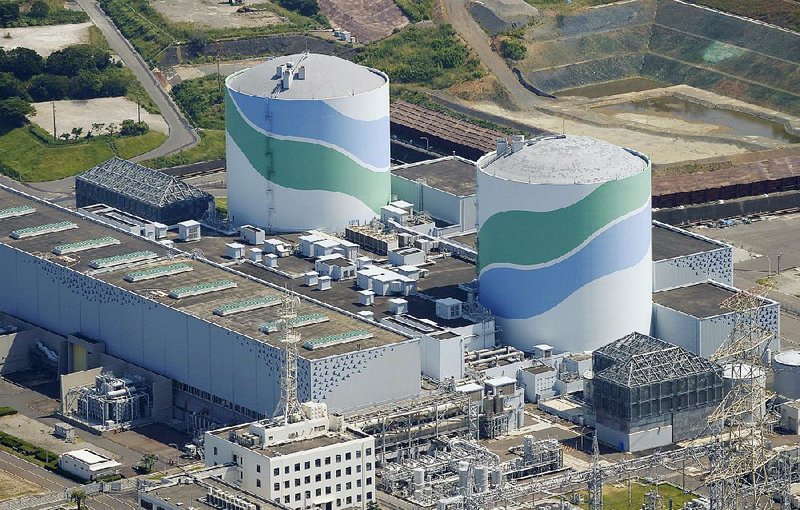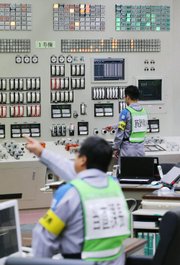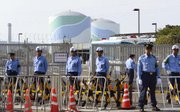TOKYO -- The pull of a lever lifted control rods from the reactor core at a plant in southern Japan on Tuesday, ending a ban on nuclear power implemented after meltdowns at Fukushima in the northeast that forced tens of thousands of people to leave their homes.
Though two other nuclear reactors briefly resumed operations after the Fukushima meltdowns, Japan has gone without nuclear power for nearly two years under tight regulations. Reactors remained idle pending safety inspections.
Nuclear plants had provided nearly a third of power generation before they were taken off line, so Japan ramped up use of coal, oil and gas to compensate. That has increased energy costs and slowed Japan's progress toward reducing emissions. Utility companies, meanwhile, face mounting costs from keeping nuclear plants idle.
Nuclear power is "indispensable," Industry Minister Yoichi Miyazawa said Tuesday, pledging to put safety first as the Sendai No. 1 reactor resumed operations.
"It would be impossible to achieve all these three things simultaneously: keep nuclear plants off line while also trying to curb carbon dioxide and maintain the same electricity costs," he said. "I hope to gain the public's understanding of the situation."
Polls in Japan have shown that most Japanese don't want nuclear power, but the country's leaders say keeping the country's 43 workable reactors off line forever would be too damaging economically.
Former Prime Minister Naoto Kan was in office at the time of the 2011 accident at the Fukushima Daiichi plant, which was triggered by an earthquake and tsunami that killed more than 18,000 people. On Tuesday, he stood shouting outside the gates of the Sendai plant, along with about 300 other protesters.
"Accidents are unpredictable; that's why they happen. And certainly not all the necessary precautions for such accidents have been taken here," Kan said.
Water is still being pumped into the Fukushima reactors to prevent further meltdowns, and some of the water, now radioactive, has leaked out of damaged containment chambers and into other parts of the buildings. Some has leaked outside and into the sea.
Removal of melted fuel from three of the plant's six reactors -- the most challenging part of the 30- to 40-year cleanup process -- will not begin until 2022.
Japan's 126 million people live in the Pacific "Ring of Fire," a seismically active region studded with volcanoes and riven with major geologic faults.
But the country invested heavily in nuclear power to help alleviate its reliance on imported fuel, and many communities rely on tax revenue and jobs associated with the plants. Japan also faces pressure to use up its stockpile of more than 40 tons of weapons-grade plutonium -- enough to make thousands of nuclear weapons.
After taking office in late 2012, Prime Minister Shinzo Abe rolled back a pledge by his predecessor's government to phase out nuclear power by 2030. The government's goal is to have nuclear power meet more than a fifth of Japan's energy needs by 2030, a target that would require 30 working reactors. As many as 18 reactors are needed to burn the plutonium stockpile.
The Nuclear Regulation Authority, restructured after Fukushima, in September affirmed the safety of the Sendai reactor and another at the same plant. The reactor that restarted Tuesday is expected to start generating power Friday and reach full capacity next month. The second Sendai reactor is due to restart in October, pending final approval.
Utilities are seeking approval to restart 23 other reactors, including the second at Sendai. Two others are under construction. But many communities don't want their reactors back on line, and experts say idled plants deteriorate quickly.
Even without nuclear power, Japan has managed to avoid power rationing and blackouts. Industries have moved aggressively to avoid disruptions by installing backup generators and shifting to new sources, such as solar power.
While Abe and other officials say Japan's safety requirements are the world's toughest, critics say this is untrue because evacuation plans are not mandatory requirements.
Tomas Kaberger, chairman of the Japan Renewable Energy Foundation, notes that the peak output of Japan's nuclear power industry was in 1998. Power companies have since pulled back from major new investments in atomic power because of rising costs and technical difficulties in operating the reactors, though Japanese manufacturers are eager to sell their nuclear equipment and expertise overseas.
"The problems for the Japanese nuclear industry started long before the Fukushima accident," he said.
A Section on 08/12/2015


